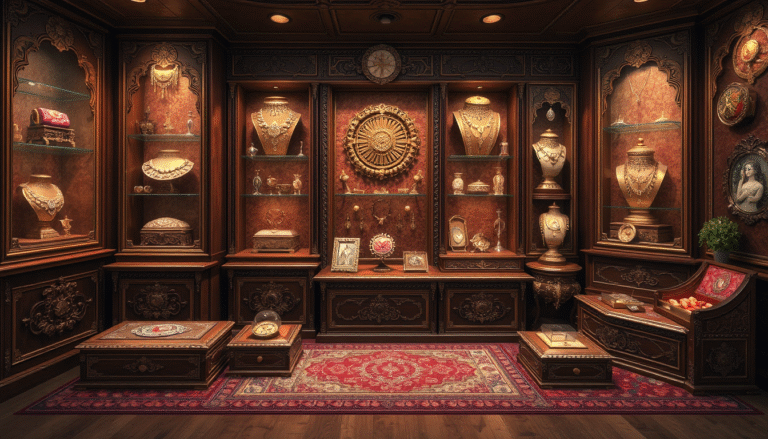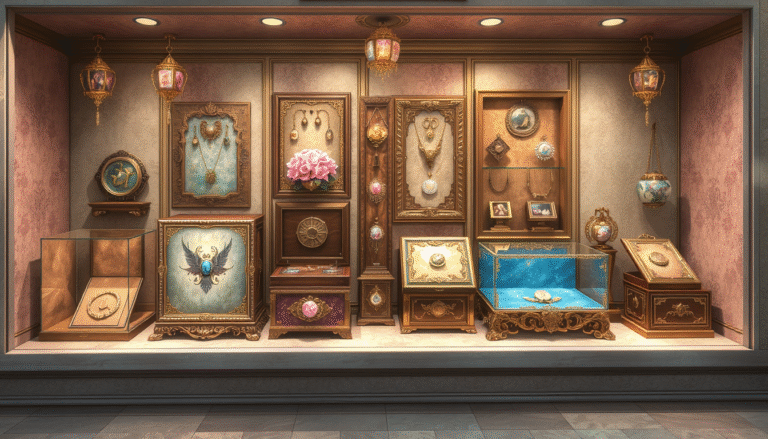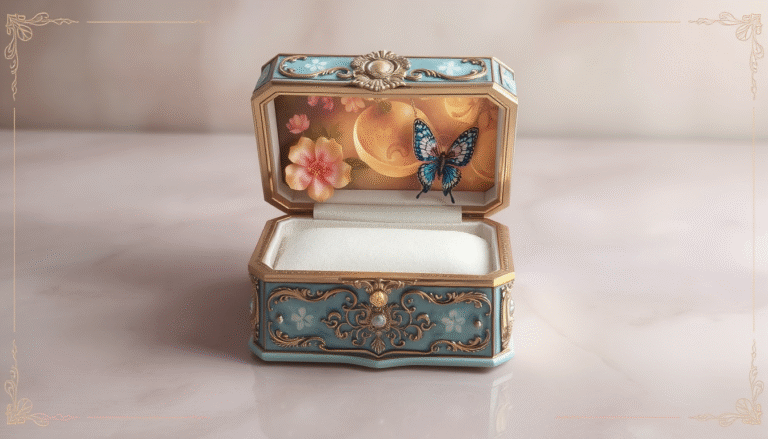Introduction: More Than Just a Box
Buying wholesale jewelry boxes is a fundamental duty for any jeweler. It’s not just an expense. The right box informs customers about your brand before they have even seen the jewelry inside.
Picking and choosing wisely is the act of balancing cost, the way your brand presents, protecting your products and running your day to day. Use this guide to help you make smart decisions beyond the customary product listing. We’ll address materials and styles, discuss customization and explore eco-friendly options.
By the end of this article, you will:
-
Learn about why purchasing in bulk is beneficial for your finances and brand.
-
Understand how to choose the right material and design for your products.
-
Learn about green packaging choices.
-
Discover how custom branding can turn it into an exciting moment for customers to open your boxes.
The Strategic Advantages of Buying Jewelry Boxes in Bulk
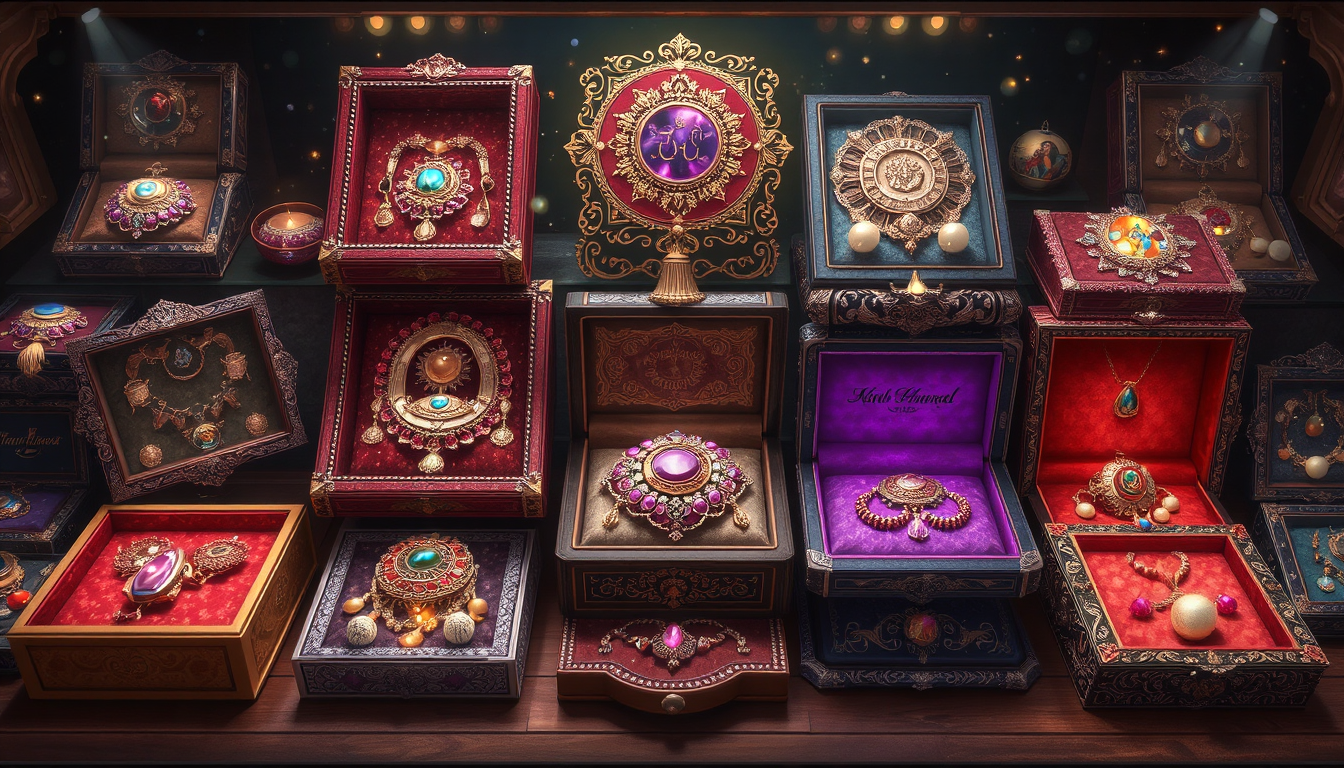
For small businesses, purchasing in bulk can appear to be a significant cost, at least initially. Examined as an investment, there are clear advantages that, in the long run, benefit your profits and brand. These gains extend well beyond mere cost savings.
Significant Cost Savings
The clearest perk of all is paying less per box when you buy more. This simple act translates into more profit on each piece of jewelry you sell. The money you save (or earn, if you charge for a service) can be reinvested in marketing, developing new products, or growing your business in other ways.
Brand Consistency
Each customer is supposed to receive the same high-quality branded box with their purchase. This is possible because a lot of the same boxes are in stock. You wouldn’t need to run out and use generic looking boxes that could have customers questioning if your brand is really up to snuff.
Operational Efficiency
Ready to go packaging saves time and money. You can turn orders around faster and stop rushing to the store at the last minute to find boxes. This other-and-smoother portion frees you and your team to actually focus on higher priority work.
Readiness for Peak Seasons
Orders multiply during holidays and sales events. So when busier days fall on you, you don’t have to painstakingly look for and stress about where to buy jewelry boxes. Don’t miss a sale because you are out of boxes when you need them the most.
A Practical Comparison of Jewelry Box Materials
Your material choice will help you create a vibe for your jewelry boxes. It determines how much the box looks like a box, feels like a box, lasts, or costs, which is to say, how customers perceive the value of what’s inside. Choosing the right material involves a trade-off between your brand’s style, guarding its products and your budget.
To help this decision go smoothly, I broke down some of the more common materials and how they stack up against each other:
| Material Type | Best For (Brand Style) | Durability | Customization Friendliness | Average Cost Tier |
| Kraft/Recycled Cardboard | Earthy, eco-conscious, rustic, minimalist brands. | Moderate | Excellent (Printing, Stamping) | $ |
| Rigid Paperboard | Mid-range to entry-luxury brands seeking a premium, sturdy feel. | High | Excellent (Printing, Stamping, Embossing, Foiling) | $$ |
| Velvet/Leatherette | Luxury, classic, and high-end brands focused on a traditional, tactile experience. | High | Good (Foiling, Debossing) | $$$ |
| Wood | High-end, heirloom, and bespoke brands selling premium, one-of-a-kind pieces. | Very High | Good (Engraving, Staining) | $$$$ |
| Clear Plastic/Acrylic | Modern, contemporary, and minimalist brands that want the product to be visible. | Moderate-High | Moderate (Printing, Etching) | $$ |
The bottom line is to match what you’re saying with the price point of your product and the story behind your brand. A handcrafted silver ring sits comfortably in a Kraft box. A gold and diamond engagement ring demands a fancier rigid paperboard or leatherette box.
The Sustainability Factor: A Guide to Eco-Conscious Packaging
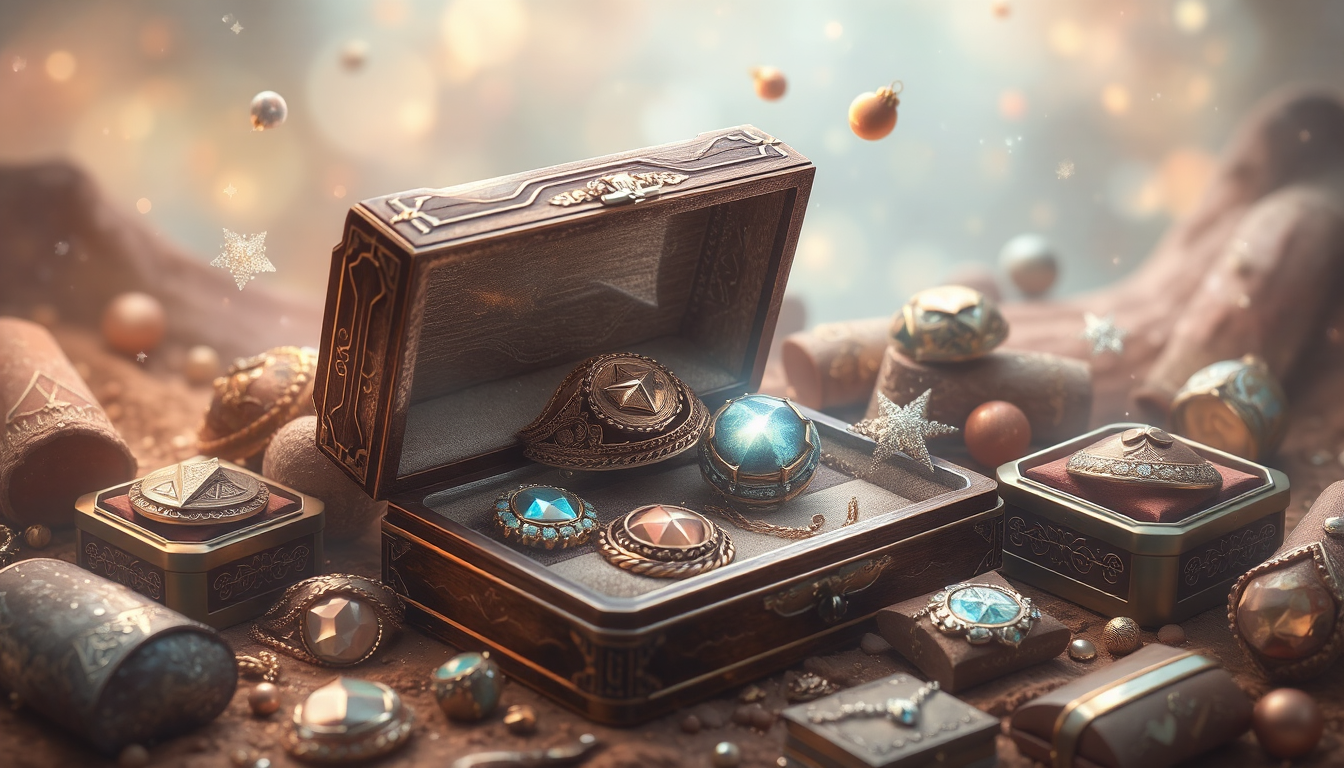
Eco-friendly is not just in vogue in today’s market — many customers are passionate about it. The packaging illustrates how much your brand is concerned about the environment. For jewelry brands that frequently incorporate natural materials, green packaging can set you apart.
Key Terms to Look For
Knowing the right words also is useful for finding sustainable suppliers. Inquire about these certifications and materials:
-
FSC-Certified: This means the paper or wood comes from responsibly managed forests, checked by the Forest Stewardship Council. Using FSC-certified materials shows customers your packaging doesn’t harm forests.
-
Recycled Content: Ask how much recycled material is in the packaging and if it’s “post-consumer” (from recycled waste) or “pre-consumer” (from factory scraps). According to recycling standards for paper products, post-consumer content is usually better for the environment.
-
Soy-Based Inks: These are more environmentally friendly than traditional petroleum-based inks. They’re also less hazardous during printing and recycling.
Inserts and Fillers: The Hidden Environmental Impact
Nor what goes in the box to keep the jewelry in place. A recycled box filled with non-recyclable foam isn’t consistent with an eco-friendly sentiment.
Look at your options carefully. Soft black foam inserts are frequently constructed from hard-to-recycle polyethylene. Much better is an insert out of the same recycled paperboard used to make the box. Natural cotton or burlap fill also is good – your fill will breakdown naturally and you can re-use it. The inset on right has the added benefit of protecting your jewelry and is also an elegant solution while it helps support your green company image.
From Box to Brand: A Small Business Guide to Customization
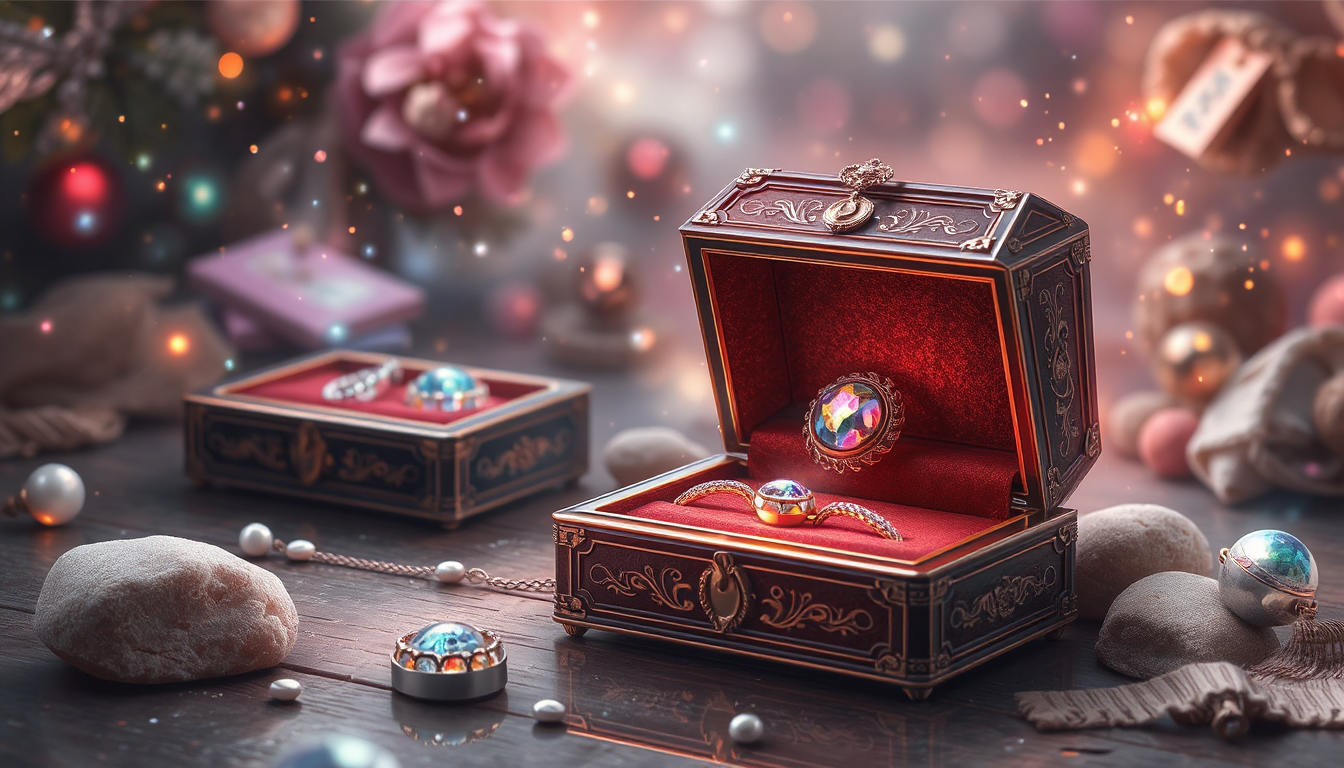
A plain box just holds something. A custom box creates an experience. Customization turns a simple box into a powerful marketing tool that makes your brand memorable. As industry experts note, packaging strongly affects how consumers see your product – it sets expectations and builds your brand identity.
Studies show that nice packaging can boost brand loyalty and make products seem more valuable. This gives small businesses an affordable way to compete with bigger companies.
Choosing Your Customization Method
The method you choose will determine the appearance of your packaging:
-
Hot Stamping / Foil Stamping: Similar to embossing, this process applies foil (gold, silver, rose gold) on the box with the use of heat and pressure. It gives the overall look a classic and expensive feel.
-
Embossing / Debossing: This is where your logo is raised (embossing) or indented (debossing) on the box. It offers a textured, sophisticated feel, subtle enough to go with any outfit.
-
Full-Color Digital Printing: This means incredible colors, designs proven to have higher engagement and a box that is printed document quality. It looks great for modern fun colorful brands.
Design Tips for Maximum Impact
Great custom design isn’t about being complicated – it’s about being clean and consistent with your brand.
Instead, home in on where you want your logo to appear cleanly — it’s often better to have one logo in the centre of the lid than a lot of visual noise. Use your branding colors to make an immediate connection. A minimalist brand might opt for black ink on a white box, while a bohemian brand might favor earth tones on Kraft paper.
Our Experience Shows: Before ordering 1,000+ boxes, always get a physical sample, even if it costs extra. A digital image on a screen can’t show the paper’s texture, the exact color, or how foil catches light. This small upfront cost can save you from an expensive mistake with your entire bulk order.
A Final Checklist: How to Vet Your Bulk Jewelry Box Supplier
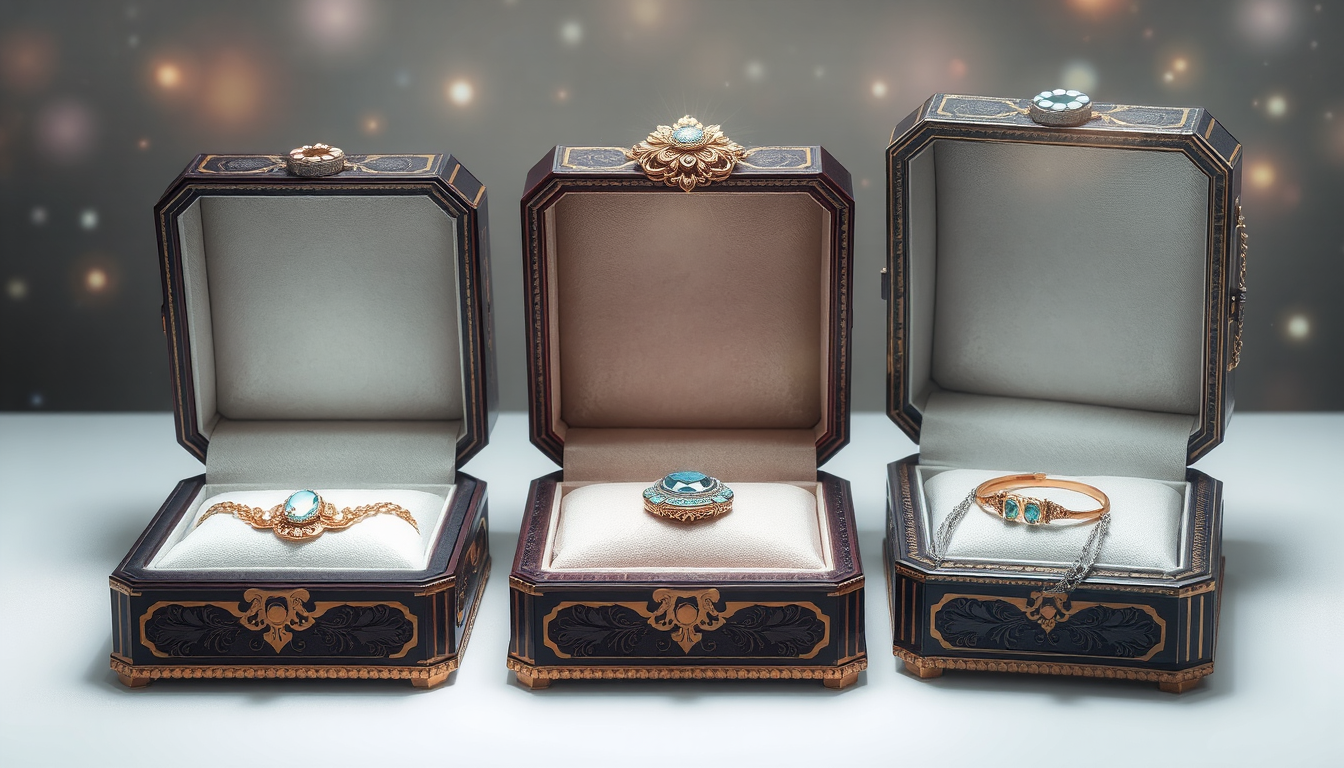
You’ve got your game plan down, you selected your material, and you designed your box. Now you just have to choose the right company to produce it. Asking some good questions upfront will save you some money and make the progress smoother.
Just as review sites like The New York Times’ Wirecutter test high-quality jewelry boxes for consumers, you should thoroughly check potential suppliers for your business. Use this checklist when contacting them:
-
What is your Minimum Order Quantity (MOQ)? That’s the first big question. (short, for brittle) before buying, to ensure their minimum works with your budget and storage space.
-
Can you provide physical samples of the box material and a printed proof? As previously stated, a physical sample is absolutely necessary for custom jobs.
-
What are your typical production and shipping lead times? You need to know this timeframe for inventory planning, especially before busy seasons.
-
Are there any one-time setup fees for custom printing plates or dies? Get a complete quote with all possible hidden costs to avoid surprises.
-
Can you provide customer testimonials or case studies from similar jewelry businesses? Good suppliers will have no problem in sharing their previous work with other businesses like yours.
-
What is your policy for damaged or defective items in a bulk order? Understand how they handle quality problems and how you get replacements or credit.
Conclusion: Investing in an Experience, Not Just a Box
Your quest for ideal bulk jewelry boxes is actually a quest for an experience. Strategizing instead of just thinking about cost in that moment really gives your brand a leg up.
We’ve discussed the relative financial benefits of ordering in bulk and looking to hear from you touched on the range of material and sustainability options, and walked you through the customization process. Now you know how to get packaging that not only keeps your jewelry safe but also builds your brand.
Keep in mind, this box is the first thing your customer will feel. Make it a memorable, positive experience that demonstrates the excellent quality and care in your jewelry. You’re not just purchasing a box — you’re purchasing your brand name, too.
FAQ
-
What are the main benefits of buying jewelry boxes in bulk?
Bulk purchase of jewelry boxes can save up to 30-80% of your packaging costs, reduce your design, print, and packaging lead time, and prepare you for seasonal peaks. -
Which materials are best for bulk jewelry boxes?
The specific materials will vary depending on your brand positioning, with Kraft/recycled cardboard for environmentally friendly brands, stiff paperboard for mid-level luxury, velvet/leatherette for high-range goods, wood for premium products, and transparent plastic for contemporary visual appeal. -
How can I make my bulk jewelry boxes more sustainable in 2025?
If you’re ordering by mail, look for FSC-certified materials, high post-consumer recycled content, soy-based inks, and eco-friendly inserts of also-recyclable paperboard or natural fibers such as cotton, burlap or wood. -
What customization options are available for bulk jewelry boxes?
Favorite customization options are hot/foil stamping for premium looks, embossing/debossing for texturized branding, and full-color digital print for lively designs that promote brand image. -
What’s the minimum order quantity (MOQ) for bulk jewelry boxes?
MOQs Different MOQs from supplier but in general 100-1000 units. Make sure you always ask for this up front along with other samples, the timeline to produce and setup fees as well as what their lost and damage policy is.

